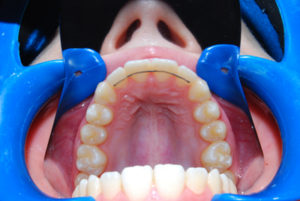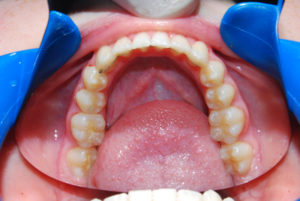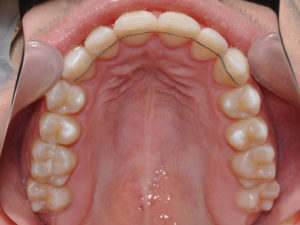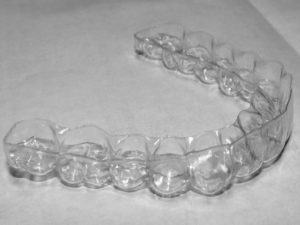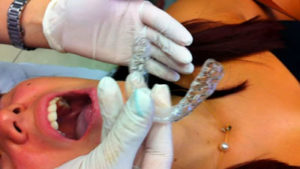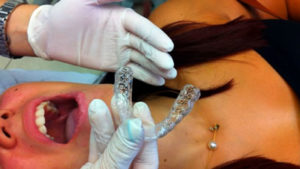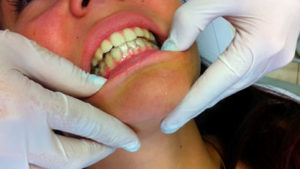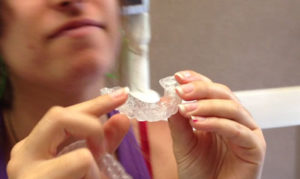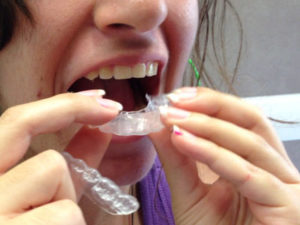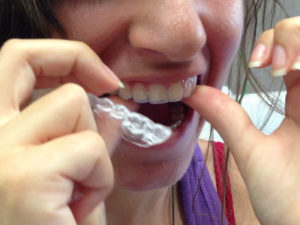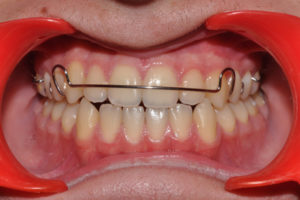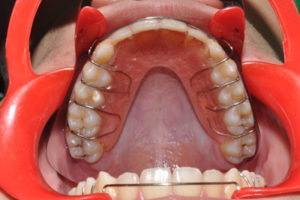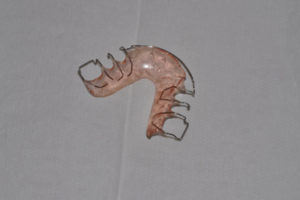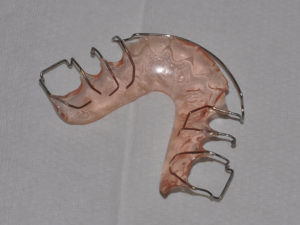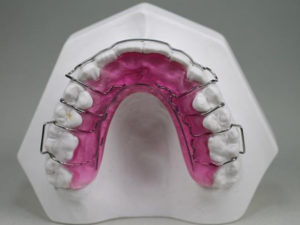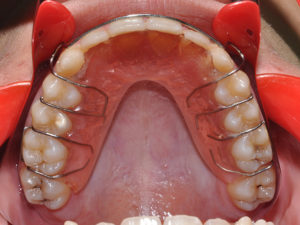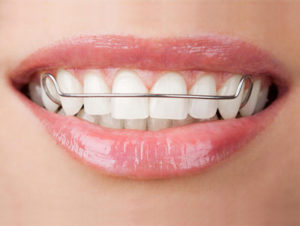Retainers are appliances used to maintain the orthodontic outcome. In order to maintain a successful treatment outcome, a retaining appliance must be used, because teeth have a tendency to relapse, i.e. to shift back to their pre-treatment state.
Retaining appliances include fixed retainers and removable retainers (Essix® retainer, Hawley retainer, etc.). Fixed retainers consist of a thin, usually metal wire that is bonded with resin to the back (interior) surface of the front teeth.
The advantage of a fixed retainer is that it remains bonded to the patient’s teeth, ensuring the stability of the orthodontic outcome. Furthermore, this thin wire is discrete and tolerable by the majority of patients. The biggest issue with fixed retainers is that they often become detached or break.
When this happens, it is possible that the patient may not notice it right away, and as a result teeth shift out of alignment and relapse occurs.
Fixed Retainers
- UPPER FIXED RETAINER
- LOWER FIXED RETAINER
- UPPER FIXED RETAINER
- LOWER FIXED RETAINER
Essix Retainer
The Essix retainer is a discrete, removable retainer made entirely of transparent plastic, which is constructed according to the shape of the dental arches on the day when braces are removed.
- ESSIX RETAINER
- ESSIX RETAINER
- ESSIX RETAINER INSERTED
- ESSIX RETAINER INSERTED
- ESSIX RETAINER INSERTED
- ESSIX RETAINER INSERTED
- ESSIX RETAINER INSERTED
- ESSIX RETAINER INSERTED
It is a light, discrete, almost invisible appliance that fits easily onto the teeth. It is easily tolerated by patients and does not cause discomfort or pain. Its drawback is that patients can use it at will and not always with the recommended frequency. Unfortunately – as with all removable appliances – treated patients often neglect to use their retainer, underestimating its usefulness. Furthermore, because it is transparent, it gets lost easily. In this case, patients must contact their orthodontist immediately in order to get a new appliance (retainer) made; otherwise, the potential for relapse is very high.
Hawley retainers are removable appliances with a design that involves metal wires and clasps anchored in a plastic body. The retainer is constructed according to the shape of the dental arches on the day when braces are removed.
Hawley Retainer
- HAWLEY RETAINER
- HAWLEY RETAINER
- HAWLEY RETAINER
- HAWLEY RETAINER
- HAWLEY RETAINER
- HAWLEY RETAINER
- HAWLEY RETAINER
The Hawley Retainer was the most widely used type of retainer to maintain the orthodontic outcome, until it was replaced by the more discrete, more comfortable and more affordableEssix Retainer. Its advantages and drawbacks are similar to those of the Essix. Again, we must emphasize the importance of using the retainer faithfully and consistently, according to the orthodontist’s directions, to avoid relapse.
The Hawley retainer is shown in the video below


